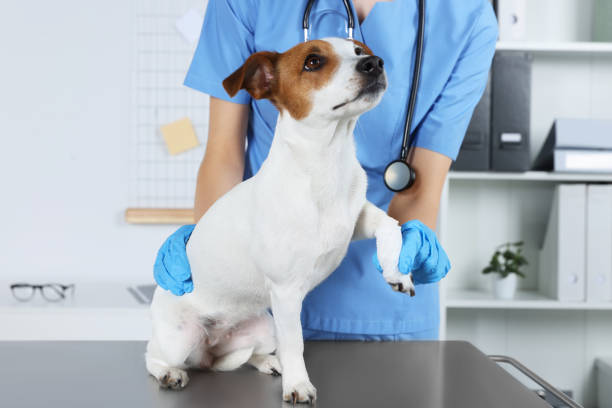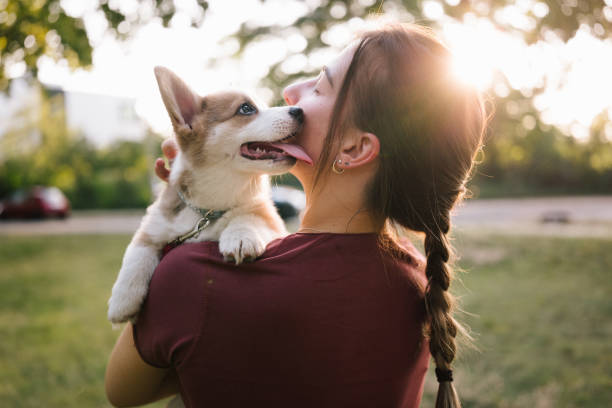Why Does My Dog Shake and Tremble? 8 Serious Causes
Watching your dog start to shake or tremble can be scary, especially when it happens out of the blue. You might find yourself asking, “Why does my dog shake?” Is it something serious? Are they in pain? Should you head to the vet right away? It’s completely normal to feel worried in that moment, especially if your dog isn’t cold and nothing obvious seems to be wrong.
The truth is, dogs shake for all kinds of reasons. In many cases, it’s nothing to panic about. A little trembling after eating, or a bit of shivering during rest, might not mean anything serious. But there are times when shaking is the body’s way of signaling that something isn’t quite right. From muscle weakness to pain symptoms, or even signs of anxiety or illness, it’s good to know what could be going on beneath the surface.
This article walks you through some of the more serious causes of shaking, without jumping to conclusions. If you’ve noticed your senior dog shaking more often or you’re unsure whether it’s a harmless habit or something that needs a vet’s attention, this guide is here to help clear things up.
Is My Dog’s Shaking an Emergency or Not? Quick-Check Guide for Worried Pet Parents
Seeing your dog tremble can send your mind racing. Is it nothing, or is it something serious? This section is built to help you figure that out fast. Look through the signs below and match them with what you’re seeing. If your dog is showing any of the emergency symptoms, don’t wait. Scroll, read, and act quickly if needed.
When to Rush to the Emergency Vet Immediately
These signs can point to a serious health problem. Act fast if you notice:
- Shaking with collapse or weakness: If your dog can’t stand up or falls over while trembling, it may be a serious internal issue or shock.
- Trembling with pale gums or blue tongue: This can point to poor oxygen or blood circulation and needs urgent care.
- Shaking with vomiting or trouble breathing: Breathing problems paired with shaking may signal poisoning, allergic reactions, or heart trouble.
- Violent shaking that lasts more than 5 minutes: This could be related to dog trembling seizure signs and needs emergency attention.
- Loss of consciousness while shaking: Fainting or being unresponsive is a big red flag. Get to the vet immediately.
- Confusion or disorientation during shaking: If your dog seems lost, stares into space, or walks in circles while trembling, don’t wait.
If you’re unsure about emergency veterinary services in your area, the American Animal Hospital Association can help you locate certified emergency clinics.
When to Call Your Vet the Same Day
These signs may not need emergency care, but they still shouldn’t be ignored:
- Shaking that lasts for hours: Normal trembling usually fades quickly. Long-term shaking could be related to pain or illness.
- Shaking with low energy or no interest in food: Loss of appetite and weakness are often early signs of something deeper going on.
- Hiding, trembling, or avoiding contact: This can be a mix of dog shaking anxiety fear or early signs of pain.
- Shaking that starts suddenly in older dogs: Senior dog shaking causes may include joint pain, internal discomfort, or even early neurological problems.
- Whimpering or stiffness while shaking: These are often dog shaking pain symptoms and should be checked soon.
When It’s Safe to Watch at Home (But Stay Alert)
These situations are usually nothing serious, but keep an eye on your dog:
Shaking during excitement or cold: This kind of dog shaking not cold usually fades once they calm down or warm up.
Trembling that stops with play or distraction: If your dog snaps out of it when you call or give a treat, it’s likely nothing serious.
Light shaking with normal appetite and energy: Puppy shaking after eating or mild trembles after naps can be normal as long as behavior stays steady.
If your dog has a history of dog trembling muscle weakness or you’re just unsure, always go with your gut and give your vet a quick call.
Normal Shaking vs Seizure Activity: Critical Differences Every Owner Must Know
It can be hard to stay calm when your dog starts shaking. You might wonder, “Why does my dog shake like this?” Is it just nerves or something much worse? This guide helps you spot the difference between regular trembling and a seizure so you can respond the right way.
Normal Shaking Characteristics:
Dogs experiencing normal trembling remain fully conscious and responsive to their environment. They can be distracted from shaking, will respond to their name, and maintain normal awareness of surroundings. Shaking typically occurs in response to identifiable triggers like cold, excitement, or anxiety. A puppy shaking after eating or a dog trembling after a stressful moment will usually act fine afterward.
Seizure Warning Signs:
- Loss of awareness: Your dog seems disconnected and won’t respond at all.
- Uncontrollable body movement: Shaking turns into full-body stiffness, twitching, or jerking. These are strong dog trembling seizure signs.
- Can’t be distracted or comforted: They won’t snap out of it until it passes on its own.
- May drool, whine, or hide beforehand: Some dogs act nervous or clingy before a seizure begins.
- Accidents during the episode: They may urinate, defecate, or fall over without knowing it.
For more detailed information on recognizing seizures, the Epilepsy Foundation offers additional resources for pet owners.
If you notice any of these, it’s time to contact your vet immediately. These symptoms could point to dog trembling muscle weakness, neurological issues, or worse. This is especially true with senior dog shaking causes or if your dog doesn’t return to normal quickly.
When in doubt, treat it seriously. A dog shaking not cold or in pain needs attention. Your vet can rule out dog shaking pain symptoms or direct you to a dog shaking emergency vet if needed.
Eight Serious Medical Causes Behind Dog Shaking
Pain-Related Shaking
Internal pain from injuries, arthritis, or organ disease commonly causes trembling in dogs. Pain-induced shaking often worsens with movement and may be accompanied by reluctance to jump, climb stairs, or engage in normal activities. Senior dogs particularly show pain-related trembling from joint disease. Recognizing early signs of pain in senior dogs can help prevent severe trembling episodes.
Toxin Ingestion
Chocolate, xylitol, rodent poison, certain plants, and household chemicals can cause severe trembling along with other life-threatening symptoms. According to the ASPCA Animal Poison Control Center, these toxic substances require immediate veterinary attention. Toxin-related shaking typically develops rapidly after ingestion and may progress to seizures or organ failure without immediate treatment.
Hypoglycemia (Low Blood Sugar)
Small breeds, puppies, and diabetic dogs are particularly susceptible to blood sugar drops causing weakness and shaking. Hypoglycemic trembling often occurs between meals and may be accompanied by confusion, weakness, or collapse requiring emergency glucose administration. The American Veterinary Medical Association notes that hypoglycemic episodes can be life-threatening without prompt treatment.
Kidney or Liver Disease
Organ failure causes toxin buildup in the bloodstream, leading to neurological symptoms including trembling. These conditions typically develop gradually and may include additional symptoms like increased thirst, changes in urination, or appetite loss.
Neurological Disorders
Brain tumors, infections, or degenerative diseases can cause persistent trembling or muscle weakness. Neurological trembling often affects specific body parts and may worsen over time without treatment.
Heart Problems
Cardiovascular disease reduces blood flow to muscles and organs, potentially causing weakness and shaking. Heart-related trembling may occur during exercise or excitement and could indicate dangerous cardiac conditions.
Addison’s Disease
This hormonal condition causes electrolyte imbalances leading to muscle weakness and trembling. Addison’s disease often presents with intermittent episodes of weakness, shaking, and gastrointestinal upset.
Muscle or Joint Disease
Inflammatory conditions affecting muscles or joints can cause pain-related trembling. These conditions may cause localized shaking in affected limbs and typically worsen with activity. If you notice weakness in your senior dog’s back legs along with trembling, immediate veterinary assessment is recommended.
Age-Specific Shaking Patterns: Puppies vs Senior Dogs
Age plays a big role in why your dog might be shaking. What’s normal for a puppy may be a concern for an older dog, and the other way around. Looking at your dog’s age can help you figure out what’s really going on and when it’s time to call the vet.
Puppy Shaking Concerns
It’s common to see young puppies tremble every now and then. They’re still learning to regulate their body temperature, so shaking can happen after naps, during cold nights, or even when they’re just excited. It can also happen during growth spurts or after a meal, which is why puppy shaking after eating isn’t always a reason to panic.
But shaking becomes a real concern if it shows up with:
- Vomiting
- Diarrhea
- Low energy or weakness
Puppies can lose fluids fast, and their blood sugar drops quicker than in adult dogs. If you notice your puppy trembling and they seem out of it, it’s safer to check with your vet right away.
Senior Dog Trembling Issues
In older dogs, trembling often connects to age-related problems. Senior dog shaking causes may include:
- Arthritis or joint pain. Learn more about natural pain relief options for senior dogs that can help reduce trembling episodes.
- Nerve issues or dog trembling muscle weakness
- Cognitive decline or confusion
- Kidney or liver problems
If your older dog starts shaking out of nowhere and you’re also noticing appetite changes, accidents in the house, or less interest in walks, it’s time for a full checkup. Dog shaking pain symptoms can be subtle but real, especially in aging pets.
Even if it looks like dog shaking not cold or stress-related, shaking in seniors should never be brushed off. These signs could be early warnings that your dog needs help. And if you ever suspect something serious, don’t hesitate to call a dog shaking emergency vet for advice.
Anxiety and Stress-Induced Shaking: Behavioral vs Medical
It’s not unusual for dogs to shake when they’re scared or overwhelmed. If you’ve ever asked yourself, why does my dog shake every time we go to the vet or during a storm?, the answer might be anxiety. Loud noises like fireworks, unfamiliar places, vet visits, car rides, or even being left alone can all trigger shaking. This type of trembling is usually short-lived and stops once your dog feels safe again.
The challenge is telling the difference between anxiety and something medical. With stress-related shaking, your dog usually stays alert, eats normally, and responds to comfort. The shaking often starts in repeat situations, like thunder or new surroundings, and eases once the trigger goes away. This is different from more serious issues like dog trembling seizure signs or dog shaking pain symptoms, where shaking may come with confusion, whimpering, or changes in behavior.
Look at the full picture. If your dog is trembling but still playful, eating well, and bouncing back after calming down, it likely points to dog shaking anxiety fear. But if the shaking feels random, gets worse over time, or comes with weakness or odd behavior, it may be a medical concern like dog trembling muscle weakness or something linked to senior dog shaking causes. When in doubt, a vet visit brings peace of mind.
Is It Too Hot or Too Cold? How Temperature Affects Dog Shaking
It’s easy to assume a shivering dog is just cold, but temperature-related shaking is a little more complex. If you’ve been asking “Why does my dog shake even when it’s not freezing?” this section helps break it down.
Cold-Induced Trembling
Small breeds like Chihuahuas, thin-coated dogs like Greyhounds, and even senior dogs tend to shiver more in low temperatures. The American Kennel Club provides detailed breed-specific care guidelines for temperature-sensitive dogs. Their bodies lose heat faster, which leads to trembling as a natural way to warm up. This kind of shaking often stops once they’re wrapped in a blanket or moved to a warmer space. If the room is already warm and your dog is still shaking, it may not be about temperature at all. That could point to issues like dog shaking pain symptoms or even dog trembling muscle weakness, especially in older pets.
Heat-Related Trembling
Too much heat can be just as dangerous. When dogs get overheated, they may start shaking as their body struggles to cool down. This kind of shaking usually comes with heavy panting, drooling, or signs of weakness. It’s important to move the dog to a cooler area immediately. If symptoms continue, especially with collapse or confusion, it could become an emergency. A quick call to a dog shaking emergency vet could make all the difference.
Not all trembling is about being cold. Dog shaking not cold can signal something else entirely, especially if it happens indoors or when your dog is calm and well-fed.
Dog Shaking After Medication? Side Effects and Drug Interactions to Watch
Certain medications can make a dog shake. This is more common than many pet owners realize, and it’s something that needs quick attention.
Medications That May Cause Shaking
Steroids
Medications like prednisone, often given for inflammation or allergies, can lead to muscle trembling in some dogs.
Seizure Medications
Drugs used to control seizures, such as phenobarbital, might cause shaking as a side effect. If the trembling seems worse after starting or changing the dose, it should be reported.
Pain Medications
Medications like tramadol or gabapentin can sometimes cause trembling, especially if the dosage is high or the dog reacts badly.
Certain Antibiotics
Some antibiotics can trigger nervous system changes that show up as shivering or twitching.
If your dog starts shaking after starting a new medication, don’t wait. Call the vet and let them know what’s happening. It might just be a side effect, or it might mean the dose needs to be changed.
Drug Interactions You Should Never Ignore:
Mixing medications without the vet’s say-so is risky. A supplement that seems harmless or a leftover pill from a past illness can mess with your dog’s nervous system. This may lead to tremors, signs that look like seizures, or muscle weakness.
Never give anything without asking your vet first. The Pet Poison Helpline maintains a comprehensive database of substances toxic to pets. Whether it’s pain relief, herbal drops, or vitamins, even common products can be dangerous for dogs. Don’t assume it’s safe because it worked before.
If your dog is on multiple medications and begins to shake, stumble, or act confused, call your vet immediately. Also, if you notice your puppy shaking after eating or your senior dog suddenly trembling, take it seriously. It could be an emergency, especially if the shaking comes with signs of pain, fear, or anxiety
How Vets Find Out Why Your Dog Is Shaking
If your dog is shaking and you’re worried, the vet visit might feel scary, but it’s often a simple, straightforward process. Here’s how it usually goes, step by step.
1. Full Body Check
The vet will first check your dog from head to tail. They’ll feel the body, listen to the heart, take the temperature, and check the eyes and muscles. They’ll also ask about the shaking like when it started, how long it lasts, what your dog was doing before it started, and any other odd behavior. This helps rule out causes like dog shaking anxiety fear or something physical like pain or illness. Avoid common first-time owner mistakes that can lead to unnecessary emergency visits.
2. Blood and Urine Tests
Next, they may run basic lab tests. A blood test and urine sample can show signs of infection, liver trouble, low blood sugar, or poisoning. These are common reasons behind puppy shaking after eating, dog shaking pain symptoms, or even senior dog shaking causes.
3. Further Testing If Needed
If nothing shows up, your vet might suggest X-rays, ultrasound, or a visit to a neurologist. This helps spot serious problems like dog trembling seizure signs, dog trembling muscle weakness, or hidden issues needing fast care. If things seem urgent, this can become a dog shaking emergency vet situation.
Your Dog Is Shaking? Here’s What to Do Right Away
When your dog suddenly starts shaking, it’s hard not to panic. But staying calm and knowing what to do in those first few minutes can make a real difference. Whether it’s mild trembling or something more serious, these steps will help you manage the situation and keep your dog safe until help arrives.
Move Your Dog to a Safer Spot
Start by gently guiding your dog to a quiet area away from anything they could bump into. Stairs, hard furniture, or slippery floors can make things worse. If your dog is on a couch or bed, help them down carefully. Keep the lights dim and the environment calm.
Don’t Hold Them Down
It’s natural to want to stop the shaking by holding them, but avoid restraining your dog unless it’s truly needed. Holding them tightly can add stress or even cause injury if they’re having a seizure.
Watch and Note What You See
Try to remember or record how long the shaking lasts. Notice if your dog is aware of their surroundings, or if they seem spaced out. Are they paddling their legs? Drooling? Losing control of their bladder? These details can help your vet figure out what’s going on.
Check Their Gums
Lift your dog’s lip and look at their gums. Healthy gums should be pink. If they look pale or bluish, it might be a sign of a bigger problem and they need to see a vet right away.
Keep Them Warm If Needed
If your dog feels cold or if they’re a short-haired breed and the environment is chilly, wrap them gently in a soft blanket. Puppies, older dogs, or smaller breeds may shake just from being too cold. But if they’re still trembling after warming up, it’s time to look deeper.
Think About What They Ate
If the shaking started not long after a meal, look around for anything they might have chewed or swallowed. A puppy shaking after eating something unfamiliar could be reacting to food sensitivity or worse, poisoning. Remove anything suspicious and call your vet if you’re unsure.
Stay Calm but Ready to Go
If your dog shows other signs like vomiting, trouble standing, confusion, or stiff movements, don’t wait. These could be seizure signs or signs of something serious. It’s time to head to the emergency vet.
You Should Act Fast If You Notice:
- Shaking that doesn’t stop after a few minutes
- Confusion or staring into space
- Trouble breathing or pale gums
- Weakness or collapse
- Signs of pain like whining or not wanting to move
These symptoms can come from many things like pain, fear, cold, or even something like muscle weakness. Senior dogs may shake more often due to age-related causes. Anxious or fearful dogs might tremble during loud noises or when left alone. And sometimes, the reason just isn’t obvious.
But one thing is clear, when in doubt, your vet is the best next step. Shaking may look harmless, but it’s not something to ignore if it keeps happening.
How to Manage Your Dog’s Mild Shaking Episodes at Home
If your dog shakes but still eats, plays, and acts mostly normal, you can try a few things at home to help them settle. Start by making their resting spot extra cozy with soft bedding and familiar scents. Keep noise low and avoid sudden movements or loud voices. A calm environment can help ease shaking caused by fear or nervousness.
Stick to their regular routine. Feed, walk, and play at the usual times so your dog feels secure. If your puppy shakes after eating, check the food temperature and make sure they’re not overeating too quickly.
Keep a simple log when it happens. Write down the time, what was going on, how long it lasted, and how your dog acted before and after. This can help later if your vet needs to look into dog trembling muscle weakness or possible dog shaking pain symptoms.
Mild cases often pass, but if you notice dog trembling seizure signs or the shaking worsens, call your vet.
Simple Ways to Help Your Dog Shake Less at Home
Shaking can come and go, but with the right daily habits, it doesn’t have to become a regular thing. Here are things that truly help:
Keep Their Environment Calm and Comfy
Make sure your dog always has a warm and cozy spot to rest. Implementing senior pet safety practices at home can prevent injury-related trembling. Sudden weather changes or cold floors can make some dogs shake more often, even if they aren’t sick. Use soft bedding, keep the room at a steady temperature, and avoid loud noises or frequent disruptions. Nervous dogs calm down more when they feel safe. Daily walks and gentle play also help release extra energy that builds up into nervous tension. Try these DIY mental stimulation activities to reduce anxiety-related shaking in stressed dogs. This is especially helpful for dogs dealing with anxiety or fear-related shaking.
Take Care of Their Health Before Problems Start
Don’t wait for something to go wrong. Regular checkups help your vet spot small issues before they turn serious. Feeding your dog good food at regular times can keep their blood sugar steady, which lowers the chance of trembling from hunger or weakness. This matters a lot if your puppy shakes after eating or your older dog is showing signs of muscle weakness. Keeping up with vaccinations and parasite prevention also helps avoid health problems that can lead to shaking or even emergency vet visits.
Helping a Dog That Shakes Regularly
When your dog keeps shaking for weeks or even months, it may point to an ongoing health issue that needs steady care. These long-term cases usually don’t go away on their own, and most times, your vet will need to stay involved throughout. Treatment might include daily medicine, switching to a different type of food, or adjusting how your dog exercises and rests.
Over time, regular vet visits help check if the treatment is working. These visits are also a good chance to make changes early before symptoms get worse. Many dogs live happy lives this way, even with the shaking still present now and then.
Some reasons behind chronic shaking include pain that doesn’t go away, nerve or muscle issues, age-related problems in older dogs, or reactions to anxiety and fear. Keeping track of small changes, like shaking after meals or during rest, can give helpful clues to your vet.
FAQs
How can I tell if my dog’s shaking is serious?
Emergency signs include shaking with collapse, breathing problems, pale gums, or loss of consciousness. Normal shaking stops when dogs are distracted or comforted, while serious trembling persists regardless of environmental changes.
Should I restrain my shaking dog?
Generally avoid restraining shaking dogs unless absolutely necessary for safety. Restraint can increase anxiety and may worsen trembling episodes. Instead, create a safe, comfortable environment and monitor for emergency signs.
Can dogs fake shaking for attention?
While dogs can learn attention-seeking behaviors, true medical trembling cannot be consciously controlled. If shaking stops immediately when ignored and returns when attention is given, behavioral causes may be involved.
Takeaway
Most dog shaking episodes are temporary responses to environmental factors or emotional states rather than serious medical emergencies. Learning to recognize the difference between normal trembling and concerning symptoms empowers you to provide appropriate care while avoiding unnecessary panic.
Trust your observations about your dog’s normal behavior patterns and don’t hesitate to seek veterinary guidance when shaking seems unusual or persistent. With proper knowledge and professional support, you can confidently manage your dog’s health and ensure they receive appropriate care when needed.






